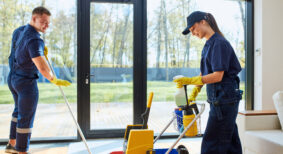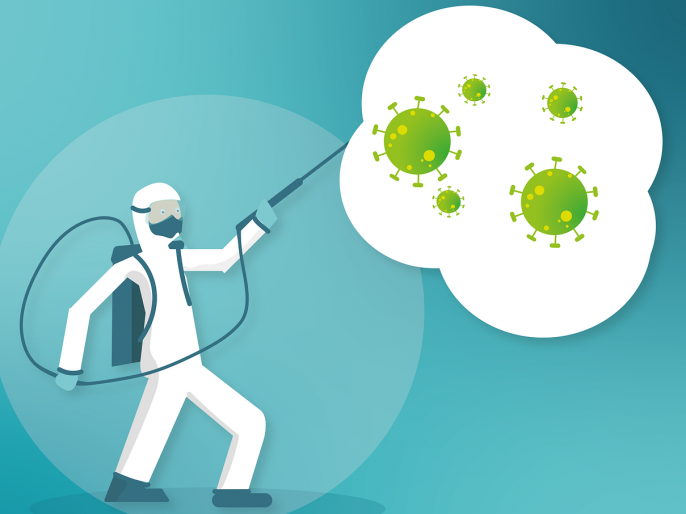As we inch our way out of the pandemic, we should remember that pandemics and epidemics of infectious diseases have occurred throughout history. Reports from ancient Greece and Egypt describe epidemics of smallpox, leprosy, tuberculosis, meningitis, and a host of other infections. In fact, there is now evidence that even Ramses V, who ruled Egypt in the mid-1100s BCE, had smallpox and possibly died of it.
In ancient times, few knew what was causing these infections, how they spread, or more importantly, how to protect people from becoming sick. Today, we understand infections more thoroughly. Furthermore, as we have seen with COVID-19, scientists know how to develop vaccines and medicines to help prevent and treat infections that once killed thousands, even millions.
Nevertheless, as COVID-19 moves into the background, one thing we have learned from the pandemic is to never let our guard down. History tells us that infections will continue to be a troubling problem around the globe. What’s more, we cannot always depend on science to come to the rescue as quickly as it did with COVID-19.
This means, going forward, building managers and cleaning professionals need advanced infection control and prevention strategies in place to help stop the spread of disease. This is where the book Protecting the Built Environment: Cleaning for Health by Dr. Michael Berry comes into the picture.
Published two decades ago, it has become the bible for the professional cleaning industry when it comes to effective cleaning. And while many infectious diseases such as COVID-19 are spread by inhalation, Berry reminds us that many are also spread by touching contaminated surfaces.
RELATED: The pandemic cleaning takeaways
A perfect example, affecting many parts of the world this time of year, is norovirus. Norovirus outbreaks can happen anywhere: in schools, offices, restaurants, and many other types of commercial facilities. Furthermore, while we hear about norovirus most frequently on cruise ships, there are more cases of norovirus on land than at sea. The virus is highly contagious and typically spreads when someone who has the disease touches surfaces that are then touched by others. This is a common form of cross-contamination.
Components of an effective infection prevention program
Managers and cleaning professionals who wish to develop an effective infection prevention program can do so by following the steps listed below. While these steps can vary depending on a variety of factors – age groups of the people using the facility, how the facility is used, what type of facility it is, how often it is used, and so on – in most cases, the following apply:
- Identify high-touch areas. This is where the risk of spreading infection is highest. Beyond the typical areas such as doorknobs and light switches, consider walkway ledges, railings, and floors. According to Mark Warner, formerly a custodial trainer at ISSA, we have an estimated 50 direct and indirect contacts with floors every day. Indirect contacts are situations where we touch a surface that has been in contact with the floor, such as picking up a pen. This means contaminated floors can spread disease.
- A fresh set of eyes. It’s often wise to have a third person, such as a janitorial distributor, inspect the facility as well. Many times, these fresh eyes can find problem areas not noticed by those using the facility every day.
- Chemical selection. Due to COVID-19, some facility managers and cleaning professionals believe that all high-touch surfaces must be cleaned and then disinfected. That is not necessarily the case. “In most situations, regular cleaning of surfaces with soap and detergent — not necessarily disinfecting those surfaces — is enough to reduce the risk of COVID-19 spread,” said Centers for Disease Control and Prevention Director Rochelle Walensky in a directive issued on April 4, 2021. (See Sidebar: Using disinfectants properly)
Also included in an effective infection control and prevention program are the following:
- Using the proper cleaning procedures and systems. Studies now suggest that comprehensive cleaning systems such as spray-and-vac (no-touch) are far more effective at removing germs and bacteria from surfaces than sprayers, cleaning cloths, and certainly mops and buckets. Spray-and-vac systems are one machine that can be used to apply cleaning solutions to surfaces, rinse the same surfaces, and then, with at least one type of system, used to vacuum up moisture, cleaning solution, and contaminants. This allows just-cleaned areas to be opened for use in minutes.
- The use of ATP systems to evaluate surfaces both before and after cleaning. Before tells us how potentially contaminated a surface is. After indicates how effective the cleaning process has been. Further, if evaluating a tabletop, for instance, it is a good idea to test several areas on the tabletop. Although ATP systems do not tell us what type of bacteria, virus, or microorganism, if any, is on a surface, a high ATP reading does indicate that contaminants may be present. If so, staff must clean or reclean those surfaces.*
- Begin ongoing training and educational programs for cleaning professionals, reviewing protocols, and updating the cleaning staff on new infection control products, techniques, and procedures. Training may take place in classroom-type settings or through new training technologies such as those mounted on some cleaning equipment, or which can be accessed via smartphones.
Facility managers should also take part in training programs so they can fully understand the infection prevention strategies in place in their facilities. And something more. Along with the ongoing training and educational programs, many managers find it helpful to let building users know the steps they are taking to keep them healthy.
This is another lesson we have learned from the pandemic. Transparency is crucial. Everyone using the facility needs to be aware of the ongoing infection control measures in place.
*Adenosine triphosphate (ATP) is an energy molecule found in all microorganisms and considered an indicator of life. When detected on a surface, it can indicate the presence of health- and life-threatening microorganisms.
Sidebar: Using disinfectants properly
- The two-step. Staff must clean surfaces first to remove germs and soils on a surface and then apply a disinfectant. Removing the soil helps the disinfectant work more effectively. This two-step process is usually not necessary when using a spray-and-vac method.
- Kill claims. Every EPA-registered disinfectant in the United States and most used in Canada will have “kill claims” on the product’s label or packaging materials. This identifies exactly what pathogens it is designed to eliminate.
- Dwelling and staying wet. Disinfectants must dwell on a surface for a few minutes to work effectively. However, during this time, they must remain wet. If they dry, the entire cleaning and disinfecting process must be repeated.
- Quat binding. Quat binding occurs when the key ingredients in most disinfectants – quats – become absorbed into the cleaning cloth or mop. When this happens, the efficacy of the disinfectant declines. Clean surfaces where possible with flat-surface cleaning systems and avoid the use of mops whenever possible. Quat binding is not an issue with spray-and-vac systems.
Drew Bunn is the Canadian Director of Sales for Kaivac Canada, a manufacturer of professional cleaning tools, equipment, and systems engineered to help protect health and stop the spread of infection. Reach Bunn at dbunn@kaivac.com








